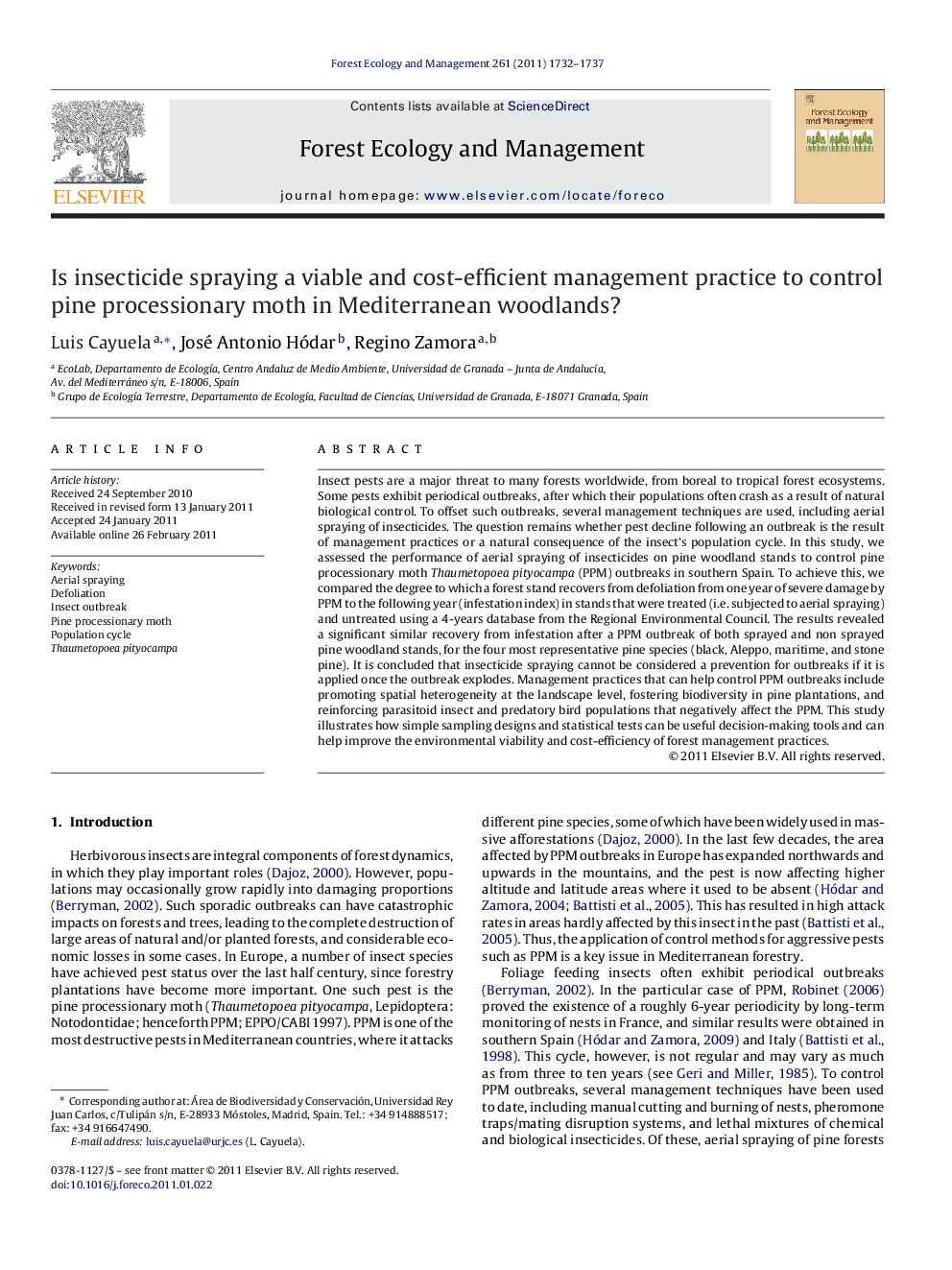| Article ID | Journal | Published Year | Pages | File Type |
|---|---|---|---|---|
| 87862 | Forest Ecology and Management | 2011 | 6 Pages |
Insect pests are a major threat to many forests worldwide, from boreal to tropical forest ecosystems. Some pests exhibit periodical outbreaks, after which their populations often crash as a result of natural biological control. To offset such outbreaks, several management techniques are used, including aerial spraying of insecticides. The question remains whether pest decline following an outbreak is the result of management practices or a natural consequence of the insect's population cycle. In this study, we assessed the performance of aerial spraying of insecticides on pine woodland stands to control pine processionary moth Thaumetopoea pityocampa (PPM) outbreaks in southern Spain. To achieve this, we compared the degree to which a forest stand recovers from defoliation from one year of severe damage by PPM to the following year (infestation index) in stands that were treated (i.e. subjected to aerial spraying) and untreated using a 4-years database from the Regional Environmental Council. The results revealed a significant similar recovery from infestation after a PPM outbreak of both sprayed and non sprayed pine woodland stands, for the four most representative pine species (black, Aleppo, maritime, and stone pine). It is concluded that insecticide spraying cannot be considered a prevention for outbreaks if it is applied once the outbreak explodes. Management practices that can help control PPM outbreaks include promoting spatial heterogeneity at the landscape level, fostering biodiversity in pine plantations, and reinforcing parasitoid insect and predatory bird populations that negatively affect the PPM. This study illustrates how simple sampling designs and statistical tests can be useful decision-making tools and can help improve the environmental viability and cost-efficiency of forest management practices.
Research highlights► Pine woodland stands subjected to aerial spraying of insecticides respond similarly to insect outbreaks than non sprayed stands. ► Insect pests are under natural control in forests and agro-ecosystems. ► Aerial spraying is an expensive and unnecessary measure to control insect pest outbreaks. ► Alternative forest management practices aiming to promote spatial heterogeneity and fostering biodiversity can be more suited to control pest outbreaks in pine plantations.
